Volt-Talking Obama Bets On Pick-Up Sales
The bailout of a Volt-producing GM was sold as an investment into a green future, a liberation from the terrorist-supporting Arabs. We have been fooled. The decisive turnaround of the company could be delivered by a new generation of big, gas-guzzling trucks. If successful, the trucks could help recover at least some of the money the tax payer sunk into GM.
Forget the Volt.
The Incentive Wars: GM Cries Uncle. Let Them Cry A Little Louder
Last week, we told you to not buy a full-sized GM pickup just yet, and to hold out for big discounts from GM. You did not have to wait long. However, you may want to wait a little more.
Battle Of The BOFs: All-Out War For Full-Size Trucks Impending
Are you in the market for a full-size pickup? Hold your fire. With a little patience, you can profiteer from an all-out Battle of the BOFs. It’s a fight for your money, and for delivering optimistic 2012 sales goals. The noise you hear outside are the winds of war: GM not only missed its truck sales goals in November, it also sits atop a 4 ½ month supply of full-size pickups taking up space (and cash) at dealer lots. “We’ll continue to use all levers to influence inventory…,” said Kurt McNeil, GM’s VP of U.S. sales. “That includes first and foremost adjusting production and marketing activity.” Translation: Shutdowns and cash on the hood.
Detroit Bets On Pick-Up Of Pick-Up Sales
U.S. gasoline prices averaged $3.47 a gallon last week on weak demand, says Reuters. At the same time, record low mortgages instill life in the real estate market and rev up housing starts. All of this makes auto companies bet on a pick-up of pick-up sales.
Capsule Review: 2013 Ram 1500
Charles Murray’s Coming Apart, an examination on the class divides in present-day America, features a handy quiz for “cultural elites” to answer, as a means of getting a sense of how much of a “bubble” one lives that isolates them from rural America. Among the questions asked are whether one owns or has owned a pickup truck (also: whether one knows an evangelical Christian, whether one has eaten at T.G.I Friday’s in the past year, and have you ever participated in a parade that did not involve global warming, gay rights, or a war protest).
Penaloza Catches Range Rover In The Buff, With Body Paint
This morning, our man in India, Faisal, showed you renderings of the fourth generation Range Rover. TTAC reader Penaloza looked up from his (free) coffee at the Embassy Suites in Corpus Christi, TX, and there it was:
Is Ford Building Trucks As Solid As Coke Cans?
The Wall Street Journal has a long article about Ford “working on one of the biggest gambles in its 108-year history: a pickup truck with a largely aluminum body.” Ford will make parts of its next generation F150 from aluminum to save some 700 lbs, which “would enable Ford’s trucks to go farther on a gallon of gasoline, and open the door to other changes, such as the use of smaller engines.” The fear is that some people will think Ford is building a truck for sissies.
Mahindra Halts Development Of U.S.-Bound Truck
What would we do without the neverending saga of the Mahindra brothers entering the United States of America with a truck? The publishing of white pages again has been prevented by the news that the U.S.-bound truck by Mahindra & Mahindra has suffered yet another of its many setbacks. The Indian company has halted development work on a pickup truck aimed at the U.S. market after a failure to win certification, Reuters says.
Ms. Truck: Petite Woman Brings In Big Bucks At GM
Some people say Obama saved GM from the abyss. Some people say GM sold its soul to the Chinese devil to cheat death. In truth, the future of General Motors rests on the shoulders of a 5-foot-2 woman by the name of Diana Tremblay. Writes Ben Klayman at Reuters:
“Global manufacturing chief Diana Tremblay is one of the highest-ranking women in the automotive industry. Throughout her 35-year career at GM, she has made her mark in what were regarded as male domains, from directing foundry workers to staring down union labor negotiators.
Now she faces an even more critical task for the world’s largest automaker – ensuring the smooth 2013 introduction of the remodeled full-size pickup trucks and SUVs, GM’s high-profile equivalent of a new Apple iPhone.
Volkswagen To Sacrifice Its Nutz For A Better Cause
In the late 70’s, Volkswagen had plans to take over truck maker MAN and to sell a whole range of commercial vehicles, from light vans to heavy trucks under the MAN brand. MAN was never taken over, much to the relief of Volkswagen’s commercial vehicle division in Hannover that feared for its independence. Some 35 years later, the plan is close to become reality.
Detroit Sleeps Through Chinese SUV Boom
SUVs are one of the strongest segments in an otherwise lackluster Chinese car market. Who slept through this trend? The kingdom of trucks, Detroit. “Instead, Japanese and Korean makers prevail in the compact segment, while German companies dominate the luxury segment,” writes Reuters in an article about China’s infatuation with SUVs.
In China, 2.1 million SUVs were sold last year, up 25.3 percent from 2010, reaching 11.6 percent of light vehicle sales, data by J.D. Power and LMC Automotive show. In the same period, the Chinese market as a whole eked out only a small 2.45 percent gain. China already buys about half of the 4.1 million SUVs sold in the United States last year. A monster market, ignored by American SUVs.
Ford Launches New Global Truck In India
While Detroit is getting ready for NAIAS, the archetypical Detroit company is showing its newest truck in India. At the New Delhi Auto Expo, Ford today unveiled the second generation of its EcoSport “compact SUV.” Our friends at India’s Motorbeam.com were there to snap some pictures for you. According to Ford’s press release, the SUV “will eventually be sold in nearly 100 markets worldwide.” So why haven’t you heard of a Ford EcoSport before?
Mahindra Denies Alabama Production Plans
You May Be Looking At The Price Of A Chinese Infiniti. Or Not
Fuelled by Nissan’s decision to move the HQ of it’s Infiniti brand to Hong Kong, rumors of an impending Chinese production of the upscale marque would not end. In November, while not denying the story out of hand, spokespeople in Yokohama indicated that announcements of Chinese production of Nissan’s luxury brand were premature. Today, China Daily has an interesting twist on the story: A trucks-for-luxury cars swap.
What's Wrong With This Picture: No Country For Old-School SUVs Edition
Wild-Ass Rumor Of The Day: Scion And Daihatsu Considering Joint Small Pickup For US?
The SUV That Might Have Been: The Marmon-Herrington Rhino
Axle and transfer case-maker Marmon-Herrington is still around, supplying OEMs and the aftermarket alike with up-rated drivetrain components. But back in the ’40s and ’50s, the firm designed its own vehicles as well, from an air-droppable tank, to a South African armored car, to monocoque electric trolley buses. Its predecessor company, Marmon Motor Car Company, even built the first car to win the Indy 500, the Marmon Wasp. Sadly this beast, an experimental amphibious off-road (on-marsh) vehicle called the Rhino ( more here), was never produced. Otherwise, the Marmon name might have been exhumed during the ’90s SUV boom by a bespoke coachbuilding firm, offering specially-bodied medium-duty truck chassis bearing the brand name that won the first Indy 500 and parachuted into Nazi Germany. Imagine the possibilities…
Chevrolet Global Colorado Debuts In Thailand
Editor’s note: GM has officially confirmed what the UAW already let slip: Chevy’s new midsized Colorado pickup will be built at the Wentzville, MO plant and sold in the US. More details on that decision are forthcoming, but in the meantime, here’s Edd Ellison’s report from the global launch of the Colorado in Bangkok, Thailand.
Chevrolet has launched its new-generation Colorado in Thailand where it will be built and exported to 60 global markets. In true GM style, the ceremony was lavish – a cluster of truck ploughed their way through a large field of crops planted in a Bangkok exhibition hall watched by the media, dealers and VIPs packed into several grandstands – and the message was just as upbeat, the automaker feeling it has a product that can compete in the crowded mid-size segment.
Edmunds Solves The Mystery Of The Full-Size Pickup Sales Boom
When we reported sales on Monday our conclusion was that “big is big again,” as full-sized pickups dominated growth in a surprisingly up month. So, how do you sell a ton of trucks in a month where gas was still hovering around the $3.50/gal mark? Easy: just throw some cash on the hood. Edmunds Autoobserver reports
From a low that generally occurred around April, Ford Motor Co., General Motors Co. and the Chrysler Group LLC have markedly hiked incentive spending on full-size pickups. In April, the average TCI for the full-size pickup category – which also inclaudes the almost statistically insignificant Toyota Tundra, Nissan Titan and Honda Ridgeline – was $3,261 per vehicle. At the end of September, the average incentive for full-size pickups ballooned by more than 30 percent to $4,281 per vehicle.
Executives from the Detroit automakers insist that this was not simply an inventory-clearing move (because, by industry standards, having three times your monthly sales on the lot is “acceptable”), but manufacturers have been trimming truck production all year and with Days To Turn rising, clearing off the lots makes sense. Especially going into the traditionally slow truck sales months of October and November. Hit the jump for more September incentive and transaction price data…
What's Wrong With This Picture: This Modern Unimog Edition
How much do things change in 60 years? Sometimes the best answer to that kind of question is a picture. Here you can see an original Unimog (right), built sometime between the start of production in 1948 and 1951, when Mercedes bought the operation in order to expand it enough to keep up with demand. On the left is a “60th Anniversary” Unimog design concept, celebrating not the actual birth of the Unimog, but its purchase by Mercedes. Needless to say, the contrast between the two is… breathtaking. And if you’re curious about the evolution of this hugely influential vehicle, if you can’t help wondering how it grew from a (relatively) tiny, spartan utility vehicle to a garish, Mercedes-starred behemoth, be sure to check out Bertel’s illustrated history of the Unimog. It makes you wonder what the next 60 years have in store for vehicles like this… [images courtesy: Autobild]
Yee-Haw! Toyota Shows Truck With Texas-Sized Name At Texas State Fair
In case you are at the Texas State Fair in Dallas at this moment, stop staring at million dollar steers and heifers and go over to Toyota. They will show you a truck with the longest name in recorded Texas history. It’s the “pre-production Tacoma Toyota Racing Development (TRD) T|X (Tacoma Extreme) limited edition pickup truck.”
We did not make that up, it says so right here in the press release. If “pre-production Tacoma Toyota Racing Development (TRD) T|X (Tacoma Extreme) limited edition pickup truck” is too long, you can call it “Baja Series.”
You Can Thank The UAW For A Truck Nobody Wants
Mid sized pickups allegedly were left for dead. Automotive News’ Product Editor Rick Kranz even accused Honda of “abandoning” its Ridgeline pickup. Now, the unloved segment is being resuscitated by – General Motors. And the UAW.
Wild-Ass Rumor Of The Day: After The Ridgeline, Honda Considering An Even Smaller Pickup?
In a blog item bemoaning the likely imminent death of the Honda Ridgeline, Automotive News [sub] Product Editor Rick Kranz accuses Honda of “abandoning” its funky pickup by failing to update its styling or hardware since it was introduced in 2005. His point seems to be that the Ridgeline was a decent enough niche product that withered on the vine… and the sales numbers certainly seem to support that thesis. But if you compare Ridgeline to other Japanese-brand compact-midsized pickups, you find that Toyota and Nissan saw similar drops in volume over a similar time period… as did practically all non-full-size pickups. So could Honda have done more for the Ridgeline, or was its decline inevitable? While you’re pondering that mystery, consider this: Kranz points to the last sentence of a months-old piece for one of those zombie rumors that never really got any play:
Based on conversations with industry sources, the story said a smaller pickup is under consideration, derived from the CR-V platform.
Presuming less payload and towing capacity than the Ridgeline, I can’t imagine why a smaller pickup based on a front-drive platform would be a more successful product formula for Honda.
On the other hand, a CR-V-based pickup is something that hasn’t been tried for decades in this market… and it wouldn’t compete nearly as directly with the cheap full-sizers that are killing the “compact” (actually midsized) pickups. So, is Kranz’s logic sound, or could a CR-V-based pickup mix up the market? Faith springs eternal for me when it comes to efficient utility vehicles… but what say you?
Cars Only Bob Lutz Remembers: The Dodge Dakota Convertible
Welcome to Bob Lutz week at TTAC! I spent several hours recently with the auto industry’s most notorious executive, and elements of that interview will be the basis for much of my writing this week. We’ll also be capping the whole thing off by voting on the 2010-2011 Lutzie award for most unfortunate quote by an auto exec. And rather than jumping right into the meat of the interview, I want to kick off Lutz week by looking at a few cars that came up in our meandering conversation. After all, these are not just vehicles… when Lutz brings them up in an interview, they become stories, little encapsulations of his philosophy or the state of the company that made them. Let’s start with a car that I literally had never heard of before he mentioned it almost in passing: the Dodge Dakota Convertible. Eat your heart out, Murano CrossCabriolet… the Dakota was the original “WTF-vertible.”
Ask The Best And Brightest: Could This Become The Littlest Ram?
First of all, let’s not fool ourselves: this is quite the hypothetical question. For one thing, Fiat is unlikely to federalize the Doblo cargo van that this “Work Up” is based upon until a subsequent generation comes out. In the meantime, the only Fiat Professional vehicle the US market will be getting anytime soon (thanks to CKD production at Warren Truck, according to Allpar) is the Ducato van, which competes fairly directly with Daimler’s Sprinter. But, hypothetically, could this Doblo “Work Up” find a market in the US? Let’s look at what it offers…
Land Rover Defends The Faith
VW Is Working On An American-Sized SUV
When I was still working for Volkswagen, I blatantly picked up the delegations from Wolfsburg in my Eddie Bauer Expedition when they arrived at JFK. The higher paygrades were already used to it. The lower paygrades inevitably asked: “Why don’t you drive a Touareg?” While bouncing down the Van Wyck, I inevitably shouted “Silence in the third row! The Touareg doesn’t even have a third row. If I had a Touareg, you’d be sitting in a taxi.”
Soon I’d run out of excuses: If Germany’s AUTO BILD and the DetN are correctly informed, then Volkswagen will get a big SUV – big enough for Americans, even for those with a smaller wallet.
2012 Toyota Tacoma: It's A Facelift (Of Course)
A new Toyota Tacoma is scheduled for release this fall, and pickuptrucks.com reckons this is it. And because this appears to be nothing more than a relatively mild facelift, we believe it. What would have been too surprising to be true: a completely redesigned, ground-up new compact truck from any automaker in the US market. Apparently building all-new compact pickups for the US market went out of style towards the end of the Clinton Administration… so we’ll have to make do with another facelifted 5+-year-old product. It’s OK, we’re getting used to it. Video here
Quote Of The Weekend: Heavy Duty Demand Edition
In his New York Times comparison of heavy-duty pickup trucks, Ezra Dyer opens with a provocative comparison:
Heavy-Duty pickup trucks are the supercars of the truck world. They have more power than drivers are likely ever to exploit, and bragging rights depend on statistics that are, in practical terms, theoretical.
How does he figure?
While you can’t buy a diesel engine in a mainstream light-duty pickup, heavy-duty pickups now offer propulsion suitable for a tandem-axle dump truck.
I’m not exaggerating. Ford’s 6.7-liter Power Stroke diesel V-8 packs 400 horsepower and 800 pound-feet of torque; the base engine in a Peterbilt 348 dump truck offers a mere 260 horsepower and 660 pound-feet. Does your pickup really need more power than a Peterbilt?
I’m guessing most HD truck owners won’t take kindly to the question, especially coming from a scolding Gray Lady. But if you read the full review, you’ll find that Dyer was able to locate at least one contractor willing to admit that he realized he just didn’t need his HD’s overabundance of ability. It goes against the grain of the “bigger, faster, tougher, more” marketing message that has helped make trucks such a huge part of the American market, but is it possible that the tide is turning? Have pickups improved too much? The huge sales of Ecoboost V6-powered F-Series certainly suggests the we may just be moving towards a more pragmatic truck-buying market…
Carquestions: Where Is The Jeep Grand Cherokee's Battery Charge Monitor?
Land Rover Mulls Defender Replacement, Pickup Version
Beware Of Low-Flying SUVs…
For the first minute and ten seconds or so of this video, you might be thinking “so what, it’s just an SUV with quad pipes?” After the 1:10 mark, though, when the development mule for the new Mercedes ML63 AMG starts flying around the track, you may just begin to wonder if the laws of physics are being bent. There’s something a little distressing about watching a 5,000+ lb ute tucking through tight corners, as if the car guy’s traditional fetish for light weight were suddenly revealed to be some kind of cruel joke. But perhaps what’s really bothering me is that I know I’ll never see one of these things driven this way, unless some famous football player commits a heinous crime of some kind and leads cops on a modern, high-speed update of OJ Simpson’s infamous chase. In which case, I’d say this might just be the vehicle to have.
Ask The Best And Brightest: Should Trucks Be Limited To The Right Lane?
As a telecommuter, I don’t drive as much as many Americans do, but I’ve come to the conclusion that lane discipline in this country (or at least in my part of it) is a huge problem. Traffic is frustrating in all circumstances, but unnecessary congestion caused by drivers who act without any apparent awareness of traffic around them is by far the most frustrating. And, in many cases, unnecessary congestion is caused by light-duty vehicles being held up by trucks, or slow-moving traffic clogging the left lane because of trucks passing in the middle lane.
Jalopnik takes on the issue of trucks in traffic with a piece entitled What you don’t know about the truck driver you just flipped off, which argues that truckers are overworked, overregulated and under financial pressure to deliver quickly. And though I sympathize with the plight of long-haul truckers, I don’t believe they should be allowed to leave the right lane.
Trekka: Skoda Meets Land Rover In New Zealand
Each weekend, TTAC turns its attention to some of the more obscure news and stories from around the world, taking you from Jakarta to Haiti to Monaco… and now to New Zealand. Hungarian Skoda blog stipstop.com takes us to New Zealand in 1966, when Auckland-based Motor Lines were able to adapt a Jowett Bradford-based utility vehicle made by Kawerau into a Skoda Octavia-based Land Rover lookalike… and the Trekka was born! Only 2,500 of the little runabouts were made in steel-paneled wagon and “ute” bodystyles (specs here), of which five served duty in Vietnam and one was purchased for unknown reasons by General Motors, which shipped it to Detroit in 1969. The Trekka was an “icon of the Kiwi can-do spirit” by the time it went out of production in 1973, and it was much loved in New Zealand, although it was never as capable as its Landie-alike bodywork suggested (a limited-slip differential was eventually developed for it). But the low-cost Trekka (it cost £895, less than a Morris 1100) was ultimately a product of New Zealand’s import tariffs, and as these began to fall in the 1970s, the Trekka’s day had passed. Today, fewer than 30 remaining models have been documented by trekka.co.nz.
With Support From At Least Eight Automakers, White House To Unveil 2025 CAFE Proposal Tomorrow
After the apocalyptic warning from the industry about a proposed 56.2 MPG 2025 CAFE standard, the auto industry seems to be backing the White House’s latest proposal, which reduces the 2025 target to 54.5 MPG, slows the rate of efficiency improvement for trucks and increases advanced technology credit loopholes. Another key consideration: the White House agreed to a mid-term review of the 2025 standards to ensure they reflect the market. Plus, the DetN points to a previously unheard-of compromise to keep big trucks cheap:
The plan is also carving out special rules for “work trucks” — heavier light duty vehicles used for construction.
As a result of these compromises, the WSJ [sub] reports:
As of Wednesday, Toyota Motor Corp., General Motors Co., Ford Motor Co., Chrysler Group LLC, Honda Motor Co., Hyundai Motor Co., Nissan Motor Co., BMW AG and Volvo had told the administration they would support the plan
With the industry now largely on board, the Obama Administration has a green light to announce its new standard at a ceremony planned for tomorrow. But not everyone is happy with the new proposal…
That's Not A Crash Test, This Is A Crash Test
If you don’t speak German, you can go ahead and skip to 1:30, where the magic happens. Essentially, the German safety nuts at the ADAC and DEKRA have been trying to scare motorists silly for some time now, shaming automakers and educating motorists about the dangers they face every day. The latest terror: a semi truck plowing into you from behind at about 43 MPH. The results? Well, they speak for themselves. The reason? Illustrating the need for Emergency Brake Assist in large trucks, which the ADAC argues should be mandatory for all trucks [per Autobild]. Though this does seem to be something of a case of legislating against stupidity, the ADAC certainly make a vivid argument for their cause…
The Humvee Is Back!
The NYT reports that, having fallen out of favor in the Afghanistan campaign for its vulnerability to roadside bombs, the HMMWV is making a comeback. The Humvee was being replaced by mine-resistant armored personnel carriers called MRAP s,
But recent blast tests show that Humvees built with the new chimney could provide as much protection as some of the heavier, and more costly, mine-resistant vehicles that have replaced them in many uses.
And if the final tests go well, the invention could save billions in new vehicle costs and restore much of the maneuverability that the Army and the Marines have lacked in the rugged terrain in Afghanistan, military officials say. Engineers say the chimney, which rises through the passenger cabin, releases some of the explosive gases — traveling at twice the speed of a fighter jet — that have mangled and flipped many of the vehicles.
Pentagon officials have said little about the 11 blast tests so far, in which the prototype vehicles are engulfed by a cloud of smoke, dust and fire, but the passenger cabin remains intact.
It turns out that adding armor hurts the maneuverability that makes the HMMWV so prized, and is less effective than the new chimneys which deflect blast forces around and away from the passenger compartment. The military will conduct five more blast tests and could request bids for the new generation of HMMWVs sometime this fall.
MI Congressional Delegation: 56.2 MPG CAFE Proposal "Not Feasible"
An anonymous tipster has sent us a copy of a letter from the Michigan congressional delegation to President Obama [ PDF here, or hit the jump for an embedded copy], which calls his proposal for a 56.2 MPG CAFE standard by 2025 “overly aggressive and not reasonably feasible.” The letter is remarkable in the sense that the major signatories are Democrats, and yet it attacks the President’s proposal with more vigor than many inside the industry. The letter also confirms that that the Detroit-based automakers already rely on CAFE’s “credit” loopholes in order to meet the 2012-2016 standard, a stunning admission of how far behind Detroit still lags in fleet fuel economy. And rather than taking responsibility for their situation, the MI representatives blame CAFE for Detroit’s low fleet efficiency, arguing that “manufacturers that produce primarily smaller vehicles will have an unfair advantage.” Moreover, the MI reps don’t just admit that Detroit is behind its competition, but even goes as far as to argue that “the overall targets currently proposed may exceed what is technologically achievable for the the US automakers that produce and sell the majority of the larger pickup trucks and sport utility vehicles that US families and businesses -and tens of thousands of autoworkers- depend on.”
In short, the letter strikes me as a shockingly old-school display of excuses and apologia that stands in sharp contrast to the “green car revival” narrative that Detroit and D.C. pushed so hard during the bailout. And frankly, I’d be embarrassed if I ran one of the largest automakers in the world and I was reduced to pleading my inability, on technological grounds no less, to achieve a 56.2 MPG fleet average (which in “window sticker” terms, translates to about 41 MPG EPA) within 15 years… even though CAFE is riddled with loopholes that make it easier to continue building thirsty trucks. If Detroit were actually leading the charge for a gas tax (or offering any kind of market-driven alternative), it might have some credibility on this issue, but as things stand this strikes me as nothing more than whining. So much for America’s “can-do” spirit…
GM Defends Full-Sized Truck Investment
The word “truth” in our title has long been a cudgel for our critics, who, finding fault with our analysis, condemn us for failing to publish their version of the truth. But, as I’ve steadfastly maintained since taking up TTAC’s editorial reins, we do not hold ourselves up as the sole source of truth. Rather, by provoking an engaging discussion, we hope that our readers will use our posts as a jumping-off point to debate the issue at hand with vigor. The truth, as I find myself saying again and again, is a journey, not a destination.
Accordingly, I’m always thrilled when manufacturers read our pieces and offer up their own counterpoint to the discussion, broadening our understanding of the issue at hand and moving the conversation forward. One of my posts from yesterday, which examined GM’s decision to invest in full-sized truck production in the midst of CAFE negotiations and an inventory backlog, has drawn just such a thoughtful response from GM’s Tom Wilkinson, which is published after the jump. It provides some inside perspective on GM’s decision to move forward with the next generation of full-sized pickups, and is a great example of the kind of conversations that TTAC hopes to start every day.
In The Midst Of CAFE Negotiations, GM Re-Invests In Trucks
[UPDATE: GM responds to this piece here]
With environmentalist groups on the warpath over forthcoming 2017-2025 CAFE standards, trucks sitting on lots, and the Flint HD Pickup plant idled for much of the month, this is probably not exactly the moment GM might have chosen to put $328m into tooling for new full-sized pickups to be built at Flint. But time and the market wait for no company, and because the Silverado is GM’s single best-selling product, the investment isn’t tough to justify:
“Truck sales play an important role in the success of General Motors,” said Joe Ashton, UAW-GM Vice President. “We are confident that the next-generation of trucks will continue to be an important source of revenue for the company and jobs for our members
In case there’s any confusion though, GM is making perfectly sure nobody thinks they’re making any product choices because of union demands. At the investment announcement ceremony at Flint, Cathy Clegg, GM vice president of labor relations told Reuters [via Automotive News [sub]]
We certainly aren’t going to make a decision and make a commitment solely as a way of getting an agreement. If the market doesn’t drive it, we can’t do that
So, how is that truck market?
Launch Report: Toyota HiLux and Fortuner
An extravagant ceremony at Bangkok’s Impact Arena has seen the launch of Toyota’s new Hilux and Fortuner – key models in its developing market portfolio. The pair are products with big, tough reputations, and importantly, the profit-generating ability to match.
What's Wrong With This Picture: Not Your Grandfather's Marauder Edition
South Africa’s Paramount Group’s latest offering, aimed at what Auto Motor und Sport describes as “safety-conscious drivers,” steals a name that Panther-lovahs may recognize, but that’s where the comparison ends. Would the gentleman like 4X4 or 6X6? 300 HP diesel, top speed over 70 MPH, and a 400+ mile range? That’ll show the insurgents neighbors. In all seriousness, AM und S have a ton of pretty staggering photos, but the whole thing is a tiny bit creepy. Cool pics of big trucks are supposed to be fun, lighthearted weekend fare, but for some reason I find myself cringing a little at the thought of vehicles like this being used in places like Syria, Bahrain and hellholes globalized. But then, how did they put it in Popular Warlord Magazine? Oh yes: “the truck doesn’t make the hellhole, the hellhole makes the truck.” Words to live by right there.
Asian Brands Complain That New CAFE Rules Favors Trucks, Detroit
When the White House opened negotiations over the next round of CAFE regulations for 2017-2025, I reckoned the automakers and regulators were “working in nearly unprecedented harmony.” Well, not so much any more. The WSJ [sub] reports that, although work on “the big number” is proceeding well, in the words of IHS Automotive’s Michael Robinet
This becomes a lot more politically divisive as they become much more specific in terms of the footprint of the vehicle.
In short, the original sin of CAFE, the two-tier system that drove SUV “light truck” sales and saw the creation of “trucks” like the PT Cruiser and HHR, has returned to haunt the latest round of negotiations. And, according to the WSJ, Japanese and Korean manufacturers are complaining that the new rules will motivate consumers to buy less-efficient offerings, and in turn give the Detroit manufacturers an unfair advantage. The kumbayas are over, and the gloves are off… but just how unfair are the newly-proposed rules?
Big Truck Constipation, Confirmed
When we wrote about dealer lots overflowing with trucks, especially of the GM kind, there were a lot of nods, but also many flames. Some commenters said it can’t possibly be true. Mainly because the charts were the product of financial analyst algebra that was not readily transparent to the common high school graduate. Then, we received messages accusing us of sleeping, because other more esoteric blogs supposedly “called the GM bulls.. months ago” ago. (Or two days later.) Can’t please them all. However, today, Automotive News [sub] confirms that “Big pickup trucks are clogging many U.S. dealer lots, causing headaches for General Motors and other automakers, and raising concerns about price wars and lower profits later in the year.”
Is Toyota Losing the Market for "Technicals" to China?
You’ve seen them before, photos from some godforsaken place of insurgent warfare. A half dozen rag tag soldiers, if you can call them soldiers, bristling with Chinese Kalishnikov knockoffs, piled into a Toyota Hilux with a heavy machine gun or some other armament like a recoil-less rifle or ack-ack gun mounted on the roof or in the bed. The Toyota Hilux has been the choice of low level combatants around the world since the 1960s. As noted by China Car Times, when Muammar Gaddafi (is there a world leader whose names, first and last, are spelled in so many different ways?) had one of his snit fits and invaded Chad in 1987 to overturn the government, both sides used so many Hiluxes that Time magazine dubbed it the Toyota War. In the early 90s, the war in Somalia brought us the term “technical”, interestingly enough derived from the NGO practice of hiring local gunmen to protect their employees, and paying them with funds earmarked as “technical assitance grants”.
On The Safety Of Large Vehicles
The “big car safe, small car unsafe” debate took another interesting turn this week, as researchers from UC Berkeley have released a report arguing that large cars significantly increase the risk of death on American roads. Recent data on the most and least died-in vehicles seemed to show that larger vehicles do indeed keep drivers safer, but this new report seems to roll back the impact of that finding. Slate reports that researchers
studied accident data from eight states, identifying the type and weight of vehicles involved in collisions by their VIN numbers. The researchers confirm that the heavy cars kill. Indeed, controlling “for own-vehicle weight, being hit by a vehicle that is 1,000 pounds heavier results in a 47 percent increase” in the probability of a fatal accident. The chance is even higher if the heavy car is an SUV, pickup truck, or minivan. (Taller vehicles tend to do outsize damage, too.)
The researchers then set out to calculate the value of the “external risk” caused by our heftier vehicles. First, they considered a scenario in which a driver chose between a car with the 1989 model-year average weight of 3,000 pounds or the 2005 weight of 3,600 pounds. The heavier car increased the expectation of fatalities by 0.00027 per car—27 deaths per 100,000 such vehicles. “Summing across all drivers,” they write, “this translates into a total external cost of $35 billion per year,” using the Department of Transportation’s value of a statistical life of $5.8 million. Judging against a baseline in which a driver chose the smallest available car, such as a Smart Cars, the cost is $93 billion per year. The price tag climbs beyond $150 billion per year if you include the cost of pedestrian and motorcyclist deaths and figure in multi-car collisions.
What's Wrong With This Picture: MINI's Untouched Niche Edition
Europe Wrangles The Wingle
What’s a Wingle? It’s Great Wall’s Chinese-made entry in the “World Pickup” segment, taking on Ford’s Global Ranger, Toyota’s HiLux, Nissan’s Navara, Mahindra’s Scorpio Pik-Up and more. Having been limited to sales in Iraq, Australia, Chile, South Africa, Algeria, Syria, Uruguay, Russia and Saudi Arabia, Automotive News [sub] reports that Great Wall has wangled the Wingle into the European market by establishing a beachhead in Italy with a 2.0 diesel version. Obligatory crash-test video after the jump…
A Glimpse Of Chevy's Compact Pickup Future
Ram Pickup Ads: Will "The Code Of The West" Revive Flagging Sales?
Having kept a relatively low profile since the disastrous “My Tank Is Full” series of ads, Ram is fighting to help keep Chrysler profitable with a new series of ads highlighting the Ram’s connection to “Wild West” values. And like nearly every bit of advertising approved by Chrysler Group ad boss Olivier Francois, it’s heavy on the hyper-sincere schlock, which makes the spots end up feeling like they’re selling a political candidate rather than a truck. And this just as it seemed like truck ads were slowly moving away from some of their previous cliches. Does doubling down on sincerity and the mythical Western ethos make sense as a way for Ram to catch back up on volume it’s lost over the last few years? Or should Ford’s stunning 50%-ish take rate on EcoBoost V6 engines in F-Series be pointing towards a more pragmatic, consumer-needs-oriented marketing campaign? Watch as many of the ads as you like and be sure to let us know where you see the Ram brand and its marketing effort heading.
Ford Hit With $2b Ruling In Commercial Truck Case
An Ohio judged has ruled [full ruling in PDF here] against Ford in a 2002 case alleging the automaker overcharged dealers by selling commercial trucks at unpublished prices between 1987 and 1998. According to the summary judgement, Ford’s “CPA” program violated its contract with dealers by publishing “unrealistically high” wholesale prices and using “secretive, unpublished discounts” on an uneven basis, thereby overcharging some 3,000 dealers by an average of $1,650 for each of the 474,289 medium- and heavy-duty trucks sold in the applicable time period (about $1.2b of the ruling is for unpaid interest). The story is intriguing in its illustration of the differences between consumer and dealer incentives: while consumer-end incentives can be applied on a market-by-market basis, dealer invoice prices must be evenly applied across all markets according to Ford’s contract with its dealers. The story is also of major significance considering Ford’s still-shaky financial position, with automotive gross cash exceeding total debt by a mere $1.4b. Ford will appeal the ruling, but because the damages awarded are material rather than punitive, an expert tells the Cleveland Plain Dealer, Ford’s appeal could be “interesting.” Which doesn’t sound like great news to us…
GM: 100 Days Of Truck Inventory Ain't No Thang
At the end of May, GM had no fewer than 288,000 pickup trucks sitting on its dealers’ lots (up from 275k in April). With gas prices on a short-term dip, but in the midst of a long-term increase, and with the season of traditional gas price spikes upon us, that could give The General cause for concern. After all, even a short-term spike in gas prices could cause a sharp falloff in truck sales, stranding huge numbers of trucks on dealer lots. But, GM North American boss Mark Reuss tells Bloomberg,
We’re not going to run big incentives to clear inventory. We’ll adjust inventory on a production basis.
That’s good news for GM’s financial position, and a promising sign of a new spirit of responsible pricing. But in an industry as complex as this, even good decisions could have troubling consequences. If GM “adjusts inventory on a production basis,” the “Tier One Gypsies” who fled Orion Township to avoid a 50% pay cut could find t heir temporary refuge at Flint Truck drying up, as HD pickups are likely the first to undergo “adjustments on a production basis.” And though that’s not explicitly GM’s problem, it could ratchet up the pressure to roll back the two-tier system in the upcoming negotiation session, and generally fire up the UAW’s dissidents and hard-liners. Meanwhile, with CAFE and gas prices converging on Detroit’s BOF bread-and-butter, we’ll be watching for signs of trouble as GM adjusts to the larger issue of likely long-term declines in truck demand.
U-Haul Won't Rent Trailers To Explorers, Idiot Lawyers (Not Unibody Construction) To Blame
Should you be afraid of towing in a new Ford Explorer? Though the newly-unibody Explorer is rated for up to 5,000 pounds, Jack Baruth noted in his review that
My experience pulling my race car on an open trailer with my Flex indicates that the D4 chassis is more than up to the job, but that the transmission just feels delicate. Serious towing with a sideways gearbox frightens me, and it should frighten you, too.
And though you might well share Jack’s nervousness about towing in a new Explorer, the law of the land says it’s safe pulling up to 5,000 pounds. Even so, Consumer Reports found out the hard way that not everyone believes in the Explorer as a safe, effective towing machine. Namely the equipment rental company U-Haul appears to have some kind of problem with the Explorer, as CR’s Eric Evarts explains
I called U-Haul to see about renting their largest, 6×12-foot open trailer to drag the mulch home. “Come on down! $29.95 for the day,” the friendly attendant said.
Eager to finish that day and save $18 by delivering the mulch myself, I trundled off to the local U-Haul lot. As the workers started to fill out the paperwork inside, their faces went ashen the second I said, “Explorer.”
“Sorry, we won’t let any equipment out behind an Explorer,” they said, and began putting away their pencils.
Huh?
Your Tax Dollars At Work… On A Four-Cylinder Truck Diesel
Pickuptrucks.com reports that you may not have to wait for Mahindra to work through its legal issues to get an efficient diesel-powered pickup, as the DOE has funded development of a four-cylinder Cummins diesel engine which is being demonstrated in a Nissan Titan. According to the report
Cummins refers to the engine by the codename “LA-4” with a 2.8-liter displacement (170 cubic inches). Initial power figures on the engine dyno have the mule test engine producing 350 pounds-feet of torque at around 1,800 rpm. A chart in the presentation shows targeted power levels to be approximately 220 horsepower and 380 pounds-feet.
The engine is likely a derivative of the four-cylinder ISF architecture that Cummins builds overseas, with 2.8-liter and 3.8-liter displacements. The overseas 3.8-liter is rated at 168 horsepower and 443 pounds-feet of torque…
To meet U.S. clean-diesel standards, the 2.8 would use diesel exhaust fluid to scrub nitrogen oxide emissions, like Ford and GM use today in their heavy-duty diesel pickups. It would also feature a so-called passive NOx storage system that would capture and hold NOx during cold starts, releasing the gas when temperatures rise to levels of max efficiency for DEF. The passive system would save fuel used today to jumpstart NOx scrubbing when the system is cold.
The upshot? 28 MPG combined, according to pickuptrucks.com. Given the discrepancy between EPA fuel economy numbers and the CAFE method, that means this engine could make a Titan (which gets 13/18 MPG EPA with its stock V8) more than compliant with the 2015 30 MPG truck standard. And because the DOE spent only $15m, this probably qualifies as one of the more promising government fuel-economy improvement programs in some time. After all, improving truck efficiency is one of the toughest aspects of CAFE compliance… and if a Titan can get nearly 30 MPG combined (about the same as current four-cylinder family sedans), the government’s $15m just bought it a crushing blow to the industry’s anti-CAFE carping.
Wild-Ass Rumor Of The Day: Ram Developing Minivan-Based Compact Pickup?
When Chrysler Group Design boss Ralph Gilles said yesterday that “nothing has changed from the Five Year Plan,” I failed to mention one of the issues that made his statement less than entirely accurate: the planned “mid-sized pickup” which was supposed to debut as a 2011 model. The planned unibody pickup was labeled as “under consideration” at the time, and since nobody has mentioned it since (and because Honda’s Ridgeline has been losing sales), most industry watchers seemed to think the idea was stillborn. Not so, reports wheels.ca. Citing insiders and suppliers briefed on the program, Wheels says the new truck will be built in Windsor, Ontario on Chrysler Group’s minivan platform as
an insurance policy that the plant will continue on three shifts at full capacity.
Which isn’t as thrilling a justification as, say, “the compact pickup market has been shamefully neglected for years, and rising gas prices and CAFE standards make well-developed, modern, fuel-efficient pickups a no-brainer,” but it will have to do. And since Chrysler is reportedly targeting only 15k-20k units per year, it’s not particularly surprising either. In honor of Chrysler’s return to front-drive, compact pickups, be sure to check out the Curbside Classic on its progenitor, the Dodge Rampage.
How The Hummer H1 Went To China (Without A License)
Editor’s note: Car News China has some pictures of the Dongfeng EQ250 in police livery, accompanied by the nearly-unbelievable tale of the HMMWV’s Sinification, which we have excerpted here. Do surf over and check out one of the better Chinese car blogs out there.
AM General tried to sell the HMMWV to the People’s Liberation Army (PLA) in the late 1980′s.
The PLA however had no interest in the vehicle by that time, they thought it too big and heavy. AM General left one HMMWV in China, hoping the Chinese would change their mind. They did after the first Gulf War in 1991 when the HMMWV was on every TV screen in the world, seen as a winning vehicle that could cross every desert.
Quote Of The Day: GM Battles The Branding Boogeyman Edition
In TTAC’s early years, we spilled much digital ink over GM’s bloated brand portfolio, wondering again and again what brands should be cut, which should move upmarket and which should move downmarket. It’s a fun exercise, but one that history has largely passed by. Not only did GM cut Saab, Hummer and Pontiac in its bankruptcy, but Chrysler has more than doubled the potential number of brands to be sold through its distribution channels, shifting the brand-clutter center of gravity towards Auburn Hills. But GM isn’t done struggling with the legacy of the Sloan system, as GM North America boss Mark Reuss tells Automotive News [sub] that GM still has at least one major branding battle on its hands: Chevy versus GMC.
We need to make sure that we drive the differentiation in the product and the price to create that separation that we know we can on GMC and Chevrolet. I don’t think we have the margin opportunity set up quite right with GMC.
Good Night, Sweet G-Wagen
No, the G-Wagen isn’t gone for good… but let’s face it, we all know nothing lasts forever. Having been built with only one major technical change since 1979, the G-Wagen’s inevitable ride into the sunset is beginning with the end of production for the short-wheelbase, two-door version that we’ve never (officially) received here in the US. A complete shutdown of Graz, Austria production has been whispered about since (at least) 2005, when Mercedes nearly stopped shipping Gs to the US (according to Wikipedia, only an order from the US Marines [ Devil Dog G-Wagens FTW!] stopped Mercedes from cutting America off from the G-loving). But, according to Auto Motor und Sport, the convertible and four-door versions will continue to be built… for the moment. Think of this as an opportunity for a bit of proactive mourning….
April Sales: GM Considers Truck Cutback
What Do You Think The EcoBoost Take Rate Is On F-150?
As TTAC explained last November, the EcoBoost engine might be the best argument for the Lincoln brand, as MKS and MKT enjoyed 30% and 46% Ecoboost take rates respectively, while Taurus and Flex convinced only 14.2% and 11%of their buyers respectively to plump for the turbocharged engine. So, what do you think the take rate was for the Ecoboost engine in the F-150? You know, the one which gets good fuel economy (unless you’re towing a lot), but has to fight for recognition amid a crowd of options? Well? Write down your answer and hit the jump…



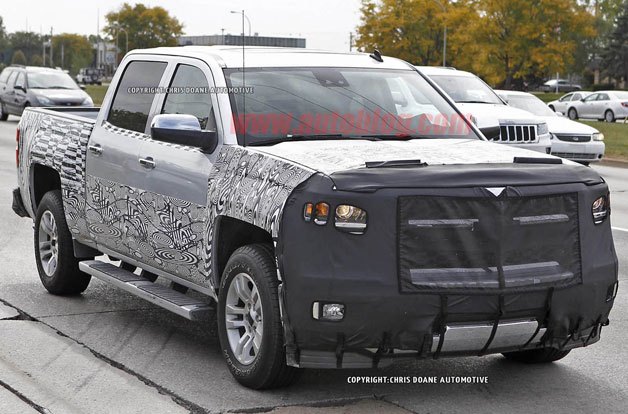
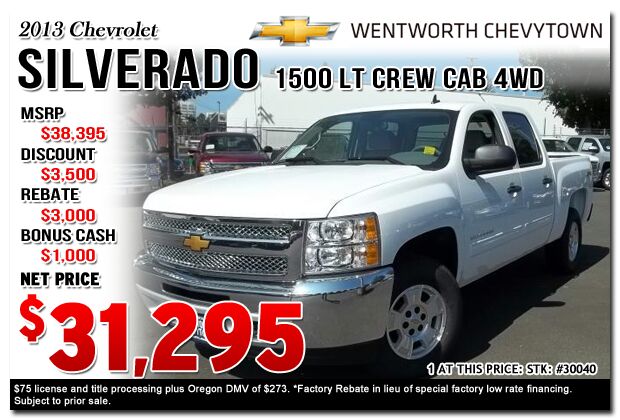





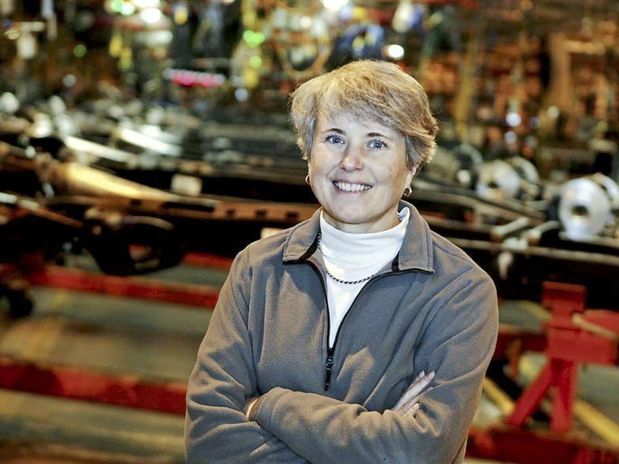

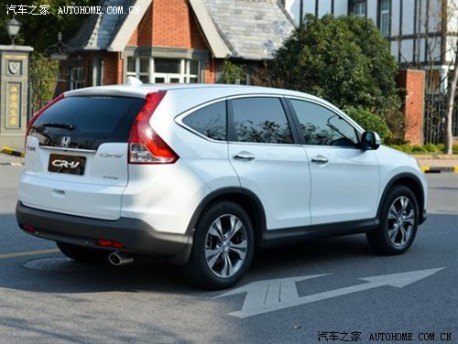
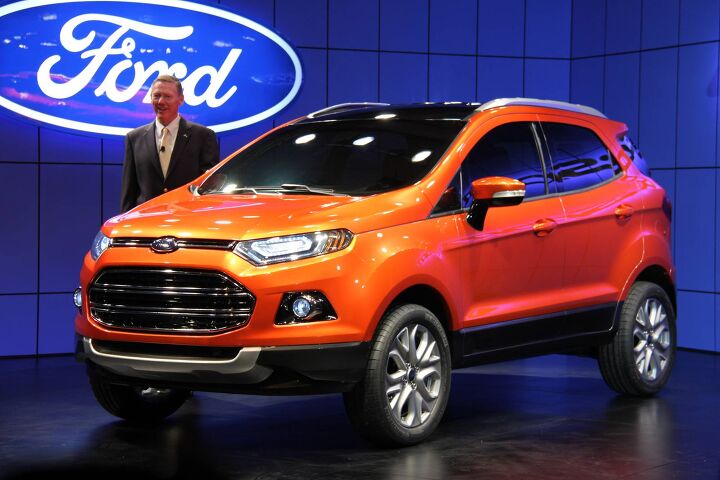


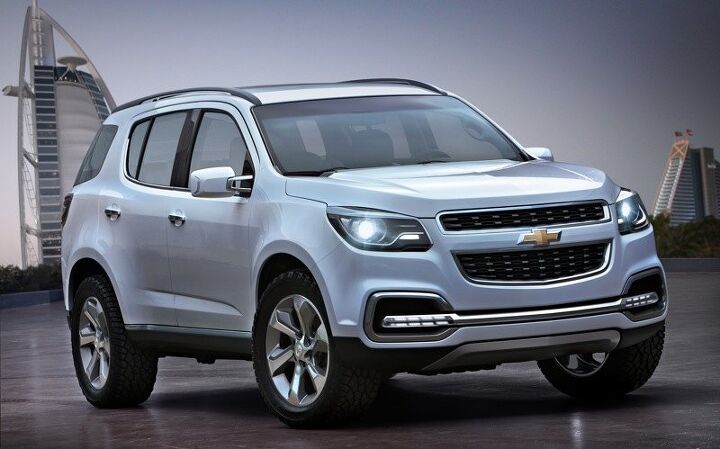





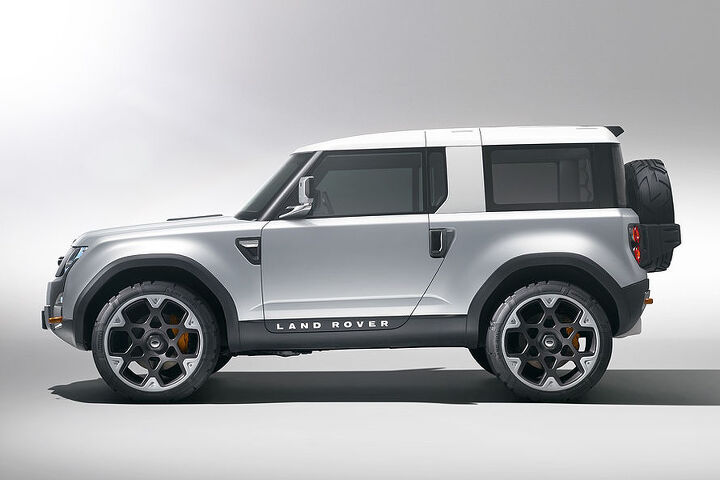

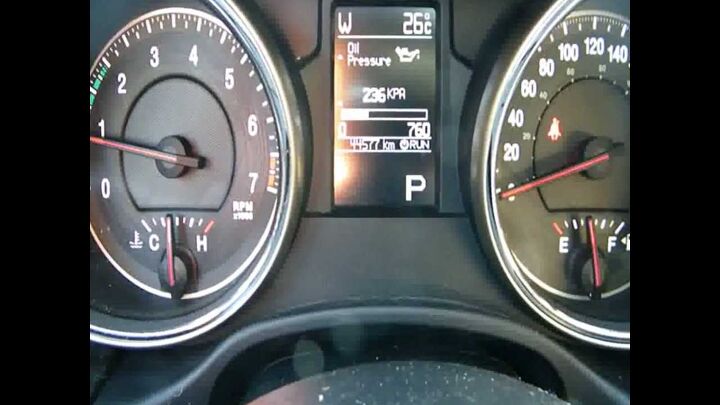

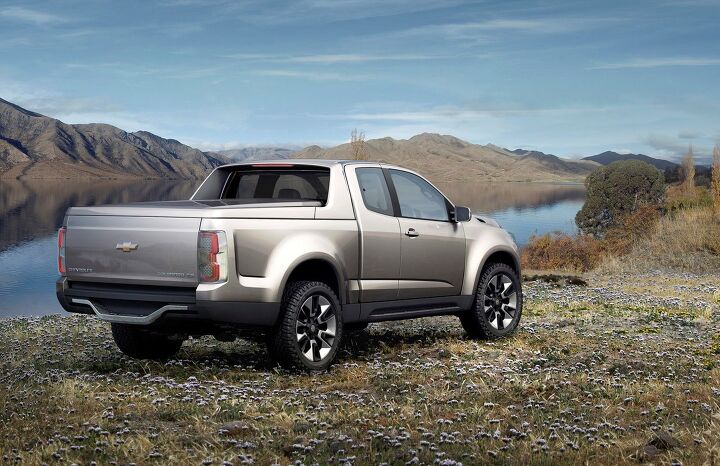

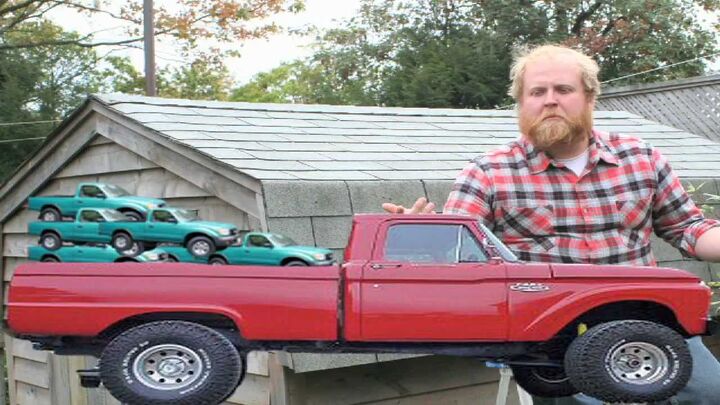



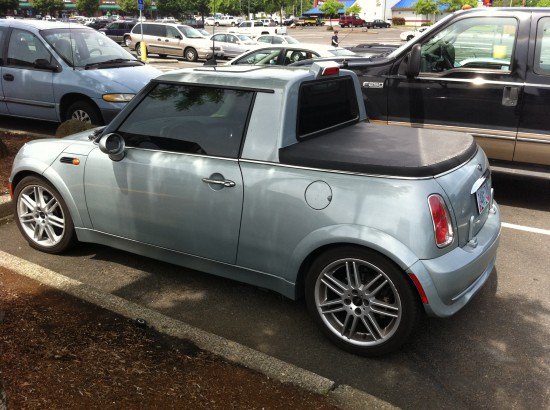

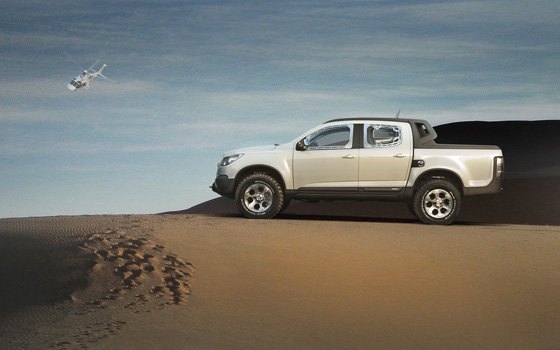

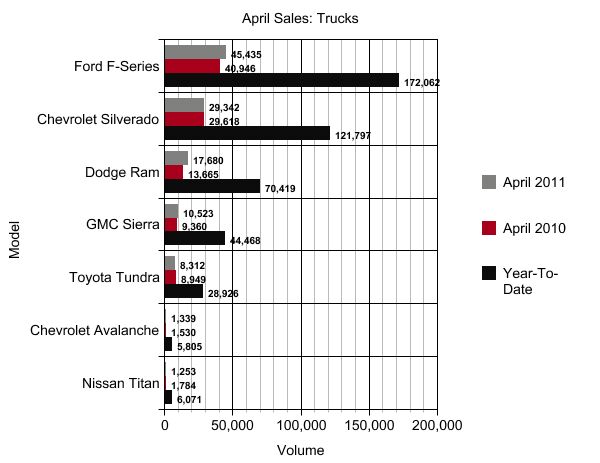












Recent Comments